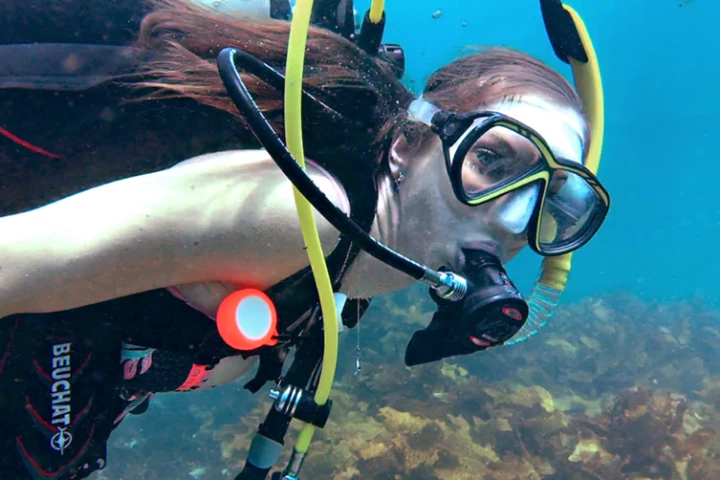Diving
-
Although many scuba divers utilize wearable computers to track dive stats, those devices can't record an actual map of the underwater route that the user travelled. The newly-developed Brizo, however, is claimed to do exactly that.
-
Surface-supplied diving systems find balance between snorkelling and scuba by strapping you to an air supply floating atop the water. Typically these systems rely on compressed air, but the ExoLung uses a more sustainable air supply: you.
-
Back in 2017, French startup Thalatoo announced the Maoi, a scuba mask-mounted head-up display (HUD) dive computer. Well, a bigger name is now throwing its hat in the ring, as California-based Scubapro has released its own product – it's called the Galileo HUD Mask-Mounted Dive Computer.
-
Omega Watches set the record for the deepest diving watches as three of its Planet Ocean Ultra Deep Professional wrist watches strapped to a special manned submersible reached a depth of 10,928 m (35,853 ft) in the Mariana Trench earlier this year.
-
The US Navy has a new Head-Up Display (HUD) for combat divers that works even in zero-visibility conditions. Shadow NAV is a visor projector that mounts on a standard diver's half-mask to provide hands-free underwater navigation capabilities.
-
Florida-based company Blu3 has come up with what it claims is the smallest, lightest and cheapest personal dive system available. It consists of a battery-powered, surface-supplied air (SSA) system that lets users dive to 10 ft (3 m) below the surface for about 60 minutes.
-
The US Navy is looking at a type of "artificial blubber" to allow divers to work in freezing conditions for hours on end. The approach uses an off-the-shelf wetsuit permeated with inert gases to triple a diver's endurance against the threat of hypothermia.
-
If global warming causes flooding that inundates the world's coastal urban areas, how will we cope? Biomimicry designer and material scientist Jun Kamei answer is Amphibio – an artificial gill and a breathing reservoir that will allow people to hang out in the submerged megacities.
-
The US Navy has begun pool testing of its new MK29 Mixed Gas Rebreather designed to conserve helium during deep sea dives below 170 ft (52 m). The test dives took place at the Naval Surface Warfare Center, where it was developed under a project sponsored by the ONR Global TechSolutions program.
-
While there ARE wristwatch-style dive computers, many divers prefer something with a larger screen. Unfortunately, such devices can cost over $1,000. A group of South Korean entrepreneurs is out to change that, with an inexpensive device that converts existing smartphones into dive computers.
-
Evolution is such a gradual process that it can be easy to think it’s not still happening. Now, researchers have discovered a striking example of natural selection at work in humans: a seafaring population of people with a mutation that allows them to dive deeper and hold their breath longer.
-
While it's important for scuba divers to log the stats of their dives, it's also nice if they can learn about nearby dive sites they haven't tried before. The Mazu dive tracker is designed to help them do both.
Load More











